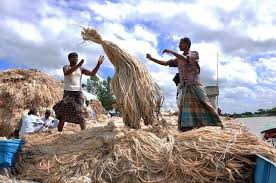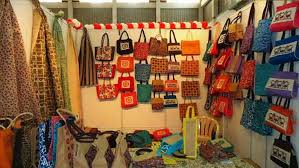In the world of natural fibers, jute stands out as a versatile and eco-friendly option with a rich history dating back centuries. Derived from the Corchorus plant species, jute fiber is renowned for its strength, durability, and sustainability, making it a valuable resource in various industries worldwide.
Plant
Jute, derived from the Corchorus genus of plants, is a natural fiber that has etched its presence in the annals of human history for centuries. The botanical names of the plants from which Jute is obtained are Corchorus capsularis ( white Jute, Deshi or Tita pat) and Corchorus olilorious (Tossa , Mitha pat). Tossa Jute is softer and stronger than Jute fibre. Jute plant can grow to a height of 2-3.5 m with high lignin contant. Hot and humid climate is best for Jute plant. In Bangladesh,India, China, Uzbekistan ,Jute are cultivated.

A Brief History
Jute’s story begins in the Indian subcontinent, where it was cultivated for centuries. However, it gained global prominence during the British colonial era when jute mills sprung up in Bengal (present-day Bangladesh and West Bengal, India) to meet the demands of the Industrial Revolution. Since then, jute has remained an integral part of global trade and industry.
Jute production and Bangladesh
Approximately 3.9 Million MT of jute and jute fibers were produced worldwide and Bangladesh is the second largest producer of jute in the world with an estimated annual production of 1.6 million tons in 2019 (FAO). There are about 220-245 private jute mills currently operating in Bangladesh. Out of these, 25 public jute mills are currently in the process of being leased to the private sector.

Characteristics of Jute Fiber
Strength and Durability: Despite its fine texture, jute fiber boasts impressive tensile strength, making it suitable for a wide range of applications, from textiles to construction materials.
Biodegradability: One of jute’s most significant advantages is its biodegradability. Unlike synthetic materials, jute decomposes naturally, minimizing environmental impact and contributing to sustainable waste management practices.
Versatility: Jute is a highly versatile material, lending itself to various applications. It is commonly used in the production of textiles, rope, twine, carpets, bags, and even as a reinforcement material in composite materials.
Breathability: Jute textiles are known for their breathability and moisture-wicking properties, making them ideal for clothing and home furnishing in hot and humid climates.Affordability: Jute is relatively inexpensive compared to many synthetic fibers, making it an accessible option for manufacturers and consumers alike.

Applications of Jute Fiber Textiles: Jute is perhaps most famous for its use in textiles. It is commonly blended with other fibers such as cotton to create fabrics for clothing, upholstery, and decorative items.Packaging: Jute’s strength and durability make it an excellent material for packaging various goods. Jute bags, sacks, and burlap are widely used for transporting agricultural produce, coffee, cocoa, and other commodities.Construction: In the construction industry, jute fiber finds application in the production of geotextiles, which are used for erosion control, soil stabilization, and landscaping.Home Furnishing: Jute rugs, carpets, curtains, and upholstery add a touch of natural elegance to interior spaces while offering practical benefits such as durability and thermal insulation.Crafts and Artisans: Jute’s natural appeal and ease of manipulation make it a favorite among artisans for crafting items such as wall hangings, lampshades, and decorative baskets.


Environmental Benefits
The cultivation of jute offers several environmental benefits:Carbon Sequestration: Jute plants are efficient carbon dioxide absorbers, helping mitigate climate change by sequestering carbon from the atmosphere.Soil Enrichment: Jute cultivation enriches the soil by replenishing nutrients and enhancing soil fertility, thereby promoting sustainable agriculture practices.Reduced Plastic Usage: As a biodegradable alternative to synthetic materials, jute helps reduce reliance on plastics in various applications, contributing to the global effort to combat plastic pollution.
Challenges and Opportunities :While jute offers numerous advantages, challenges such as competition from synthetic fibers, fluctuating market prices, and technological limitations in processing and manufacturing remain and conventional jute production methods cause a lot of water pollution . However, ongoing research and development initiatives aimed at improving jute processing techniques, diversifying product offerings, and enhancing market access hold promise for the future of this versatile fiber.
Conclusion
jute fiber’s unique combination of strength, sustainability, and versatility makes it a valuable resource with diverse applications across multiple industries. As society increasingly prioritizes eco-friendly materials and practices, jute is poised to play a pivotal role in shaping a more sustainable future.
Writer information
Miftahul Zannat
Campus name: AUST
Designation: TES General Member


